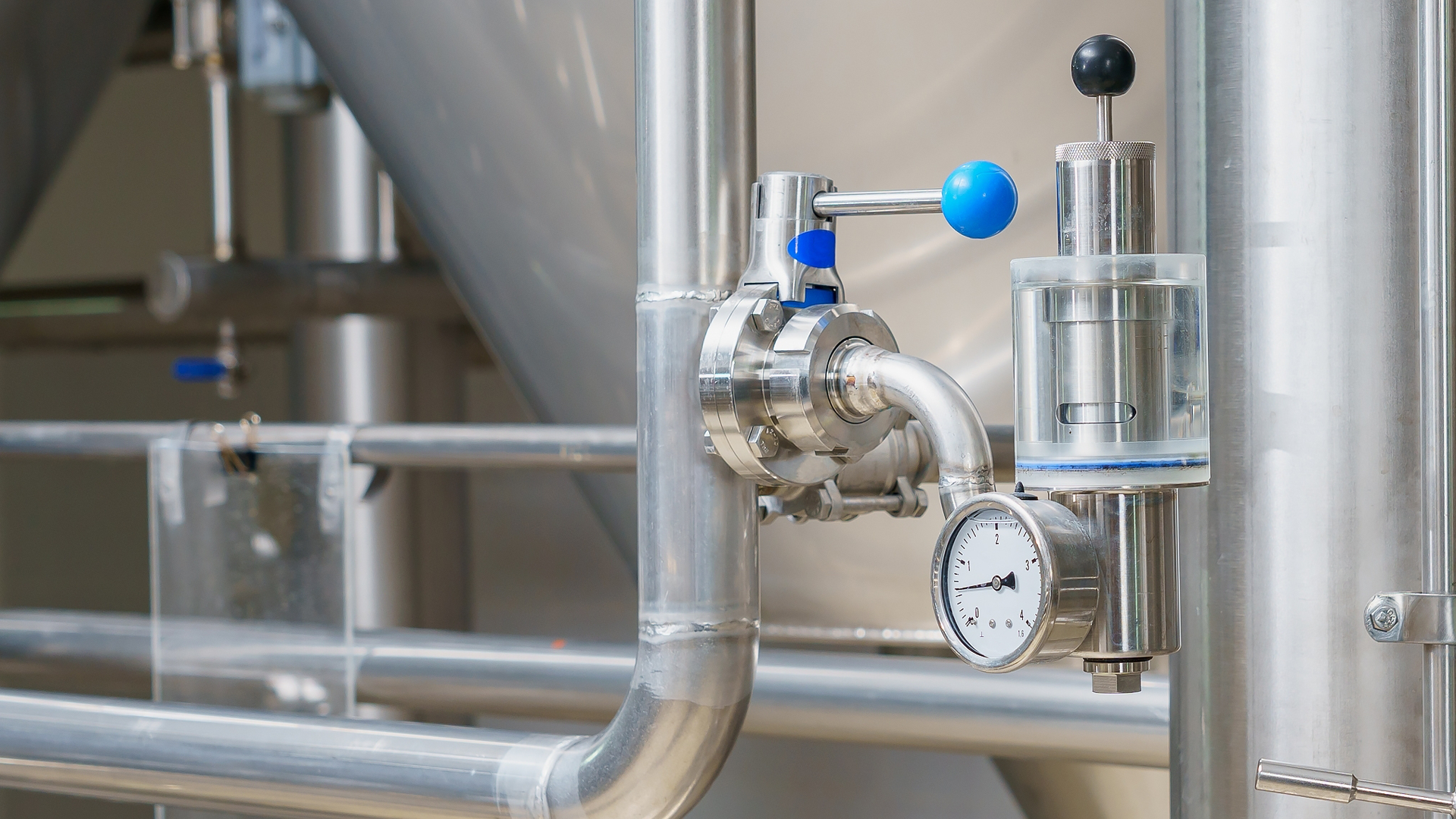Though sanitary strainers and sanitary filters may seem similar at first glance, they serve different purposes and are designed to handle specific tasks within the processing pipeline. In this blog post, we’ll look at the differences between sanitary strainers and sanitary filters, helping you understand when and why each should be used.
What Are Sanitary Strainers?
Sanitary strainers are devices used to remove larger solid particles from fluids in a processing system. They are often the first line of defense in a sanitary process, protecting downstream equipment from damage by trapping debris, such as pieces of gasket material, metal shavings, or other foreign objects that may have entered the system.
Key Features of Sanitary Strainers:
- Mesh Size: Strainers typically use a mesh or perforated screen to capture particles. The size of the openings in the mesh determines the size of the particles that will be removed from the fluid. This is usually measured in microns. We offer a wide range of mesh overlay sizes
- Construction: Sanitary strainers are made from materials that meet sanitary standards, such as stainless steel, and are designed for easy disassembly and cleaning. This ensures they can be sanitized properly between uses to prevent contamination.
- Applications: Strainers are used in situations where the fluid is relatively clean but may contain larger particulates that could cause harm to equipment or affect the quality of the final product. They are commonly found in the initial stages of the process, acting as a protective barrier.
Read more about how to choose the right sanitary strainer for your sanitary application.
What Are Sanitary Filters?
Sanitary filters, on the other hand, are designed to remove much smaller particles from fluids, often down to the sub-micron level. They are used when the goal is to achieve a high level of fluid purity, ensuring that the final product is free of contaminants that could affect its safety, quality, or efficacy.
Key Features of Sanitary Filters:
- Filtration Media: Filters use a variety of media, such as membranes, cartridges, filters, to trap particles. The choice of media depends on the type of particles that need to be removed and the desired level of filtration.
- Precision: Filters are more precise than strainers, capable of removing bacteria, yeast, and other microscopic organisms from the fluid. This makes them essential in processes where sterility is critical, such as in the production of pharmaceuticals or food processing.
- Applications: Sanitary filters are used in the later stages of processing, where the fluid has already passed through strainers and other equipment. They ensure that the final product meets strict purity standards, making them vital in industries where contamination could have severe consequences.
Key Differences Between Sanitary Strainers and Sanitary Filters
- Particle Size: The most significant difference between strainers and filters is the size of the particles they remove. Strainers are designed to catch larger particles (typically 50 microns and above), while filters are meant for finer filtration, capturing particles as small as a fraction of a micron.
- Functionality: Strainers are primarily used for protecting equipment and removing visible debris, whereas filters are used to ensure the purity and sterility of the fluid, often in the final stages of processing.
- Maintenance: Both strainers and filters require regular maintenance, but strainers are generally easier to clean and maintain due to their simpler design. Filters may require more frequent replacement of media and more complex cleaning procedures.
- Cost: Strainers tend to be less expensive than filters due to their simpler construction and the less demanding nature of their task. However, the cost of filters is justified by the level of precision they provide, which is crucial for ensuring product quality in sensitive applications.
Conclusion
Both sanitary strainers and sanitary filters play critical roles in maintaining the integrity of the processing pipeline in various industries. Understanding the differences between them is essential for selecting the right equipment for your needs. Strainers are ideal for removing larger debris and protecting equipment, while filters are necessary for achieving the highest levels of purity and sterility. By choosing the appropriate component for each stage of your process, you can ensure the quality, safety, and efficiency of your operations.
Whether you’re setting up a new production line or optimizing an existing one, knowing when to use a strainer versus a filter can make a significant difference in the outcome of your process.
Sanitary Fittings is proud to offer multiple sanitary strainer types, different mesh sizes, and a wide range of sanitary filters. Our sales team is always happy to answer and questions and to help make the right choice for your application.

